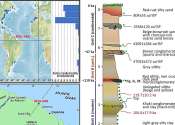The story of the first Alor people adapting to climate change 43,000 years ago
As humans, our greatest evolutionary advantage has always been our ability to adapt and innovate. When people first reached the expanded coastline of Southeast Asia around 65,000 years ago, and faced the sea crossings necessary ...









